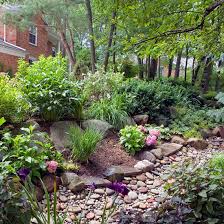
The Benefits of Sustainable Landscaping
Sustainable landscaping is a practice that aims to create beautiful outdoor spaces while minimizing negative impacts on the environment. By using eco-friendly techniques and materials, sustainable landscaping promotes biodiversity, conserves resources, and reduces pollution.
One key aspect of sustainable landscaping is water conservation. By incorporating drought-resistant plants, rainwater harvesting systems, and efficient irrigation methods, homeowners can significantly reduce their water usage and contribute to water conservation efforts.
Another important element of sustainable landscaping is soil health. By using organic mulch, compost, and natural fertilizers, homeowners can improve soil quality, promote healthy plant growth, and reduce the need for chemical inputs that harm the environment.
Sustainable landscaping also plays a crucial role in supporting local wildlife. By planting native species and creating habitat areas such as bird feeders and insect hotels, homeowners can attract beneficial insects, birds, and other wildlife that contribute to a balanced ecosystem.
Furthermore, sustainable landscaping can help mitigate climate change by reducing carbon emissions. Trees and shrubs act as natural carbon sinks, absorbing carbon dioxide from the atmosphere and sequestering it in their biomass.
In conclusion, sustainable landscaping offers numerous benefits for both homeowners and the environment. By adopting eco-friendly practices in outdoor spaces, individuals can create beautiful landscapes that support biodiversity, conserve resources, and promote environmental sustainability.
5 Essential Tips for Sustainable Landscaping
- Choose native plants that require less water and maintenance.
- Use organic fertilizers and pesticides to minimize harm to the environment.
- Implement a rainwater harvesting system to reduce water usage.
- Incorporate composting to recycle organic waste and enrich the soil.
- Create wildlife habitats by including bird feeders, bee hotels, and butterfly gardens.
Choose native plants that require less water and maintenance.
Choosing native plants for your landscaping not only adds a touch of local beauty but also contributes to sustainable practices. Native plants are well-adapted to the local climate and soil conditions, requiring less water and maintenance compared to non-native species. By incorporating native plants into your landscape design, you can reduce water usage, minimize the need for chemical inputs, and support local wildlife populations. Embracing native flora is a simple yet impactful way to create a resilient and eco-friendly outdoor space.
Use organic fertilizers and pesticides to minimize harm to the environment.
Using organic fertilizers and pesticides in sustainable landscaping practices is a crucial step in minimizing harm to the environment. Unlike synthetic chemicals, organic fertilizers and pesticides are derived from natural sources and break down more easily without leaving harmful residues in the soil or water systems. By choosing organic options, homeowners can promote soil health, protect beneficial organisms, and reduce the risk of pollution to surrounding ecosystems. This eco-friendly approach not only supports a healthier environment but also contributes to creating a more sustainable and balanced outdoor space for both plants and wildlife.
Implement a rainwater harvesting system to reduce water usage.
Implementing a rainwater harvesting system is a smart and effective way to practice sustainable landscaping and reduce water usage. By collecting rainwater from roofs and other surfaces, homeowners can utilize this free and abundant resource for watering plants, gardens, and lawns. Not only does this help conserve water and reduce utility costs, but it also reduces the demand on municipal water supplies. Rainwater harvesting systems are environmentally friendly solutions that promote water conservation and contribute to a more sustainable approach to landscaping practices.
Incorporate composting to recycle organic waste and enrich the soil.
Incorporating composting into your sustainable landscaping practices is a fantastic way to recycle organic waste and enrich the soil naturally. By composting kitchen scraps, yard waste, and other organic materials, you can create nutrient-rich compost that improves soil structure, retains moisture, and provides essential nutrients for your plants. This eco-friendly approach not only reduces waste sent to landfills but also promotes a healthy and vibrant garden ecosystem.
Create wildlife habitats by including bird feeders, bee hotels, and butterfly gardens.
Creating wildlife habitats in your sustainable landscaping design is a fantastic way to support local biodiversity and contribute to a healthy ecosystem. By incorporating bird feeders, bee hotels, and butterfly gardens into your outdoor space, you provide essential resources for these beneficial creatures. Bird feeders attract a variety of bird species, bee hotels offer nesting sites for solitary bees crucial for pollination, and butterfly gardens provide food and shelter for these beautiful insects. By welcoming wildlife into your garden, you not only enhance the natural beauty of your landscape but also play a vital role in preserving and protecting local wildlife populations.
